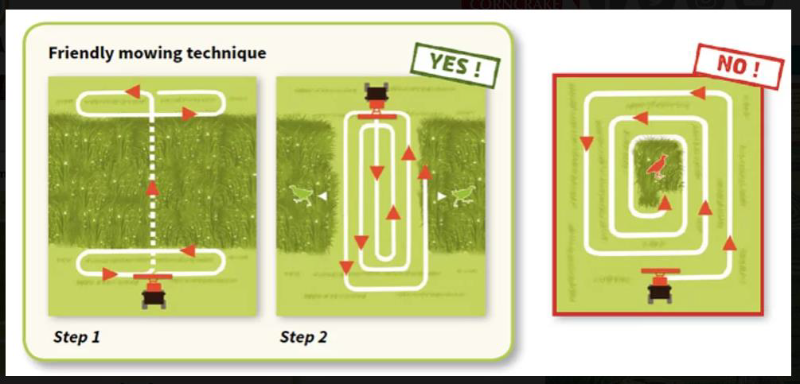Endangered Corncrake making a welcome return
Type Media Article
By Joanne Masterson – B&T Drystock Advisor, Teagasc Galway/Clare
I recently visited Inishturk Island off the Mayo coast where I heard the Corncrake for the first time. I am sure most of the younger generation would not have heard this bird before as numbers have declined in recent times. The corncrake has a very distinctive ‘crex-crex’ call and males give a loud call during the breeding season which is repeated during the day in fits and starts, reaches a peak about dusk and continues through the night until dawn. Corncrakes are summer visitors, breeding in Ireland from April to September and migrating to Africa for the winter.
The population of the corncrake in the late 60s early 70s was estimated to be at 4,000 individuals; however recent figures suggest that there was 151 calling males recorded in 2020. There has previously been three core breeding areas recorded which were in North Donegal, The Moy Valley, West Mayo/Galway and the Shannon Callows. The main reason for the decline in numbers was the increase in mowing in hay and silage fields. Mowing of hay and silage fields during the breeding seasons destroys nests. The corncrake can lay their first clutch of eggs in May and a second clutch of in June/July. The second nesting is more vulnerable as in many areas harvesting takes place from June onwards, which overlaps with the corncrake-nesting period.
Corncrake Friendly Mowing:
Up to 60% of chicks are killed when mowing from the inside in. Corncrakes are shy secretive birds and are reluctant to break cover and move to open ground. Corncrake friendly mowing is to provide birds with continuous cover as they escape from the mower into a neighbouring field or refuge area. Firstly, it is important to maintain a slow mowing speed (between 5-6km/hr) which allows adult birds and chicks to escape from the front of the mower. Secondly is to carry out mowing in such a way that birds are pushed to the edges of the field. If mowing is carried out in an appropriate way, it will have a major impact on the survival rates of both chicks and females.

Source: (Corncrake LIFE Project)
Corncrake LIFE Project Scheme
The Corncrake LIFE Project scheme works with farmers and landowners to improve habitats for corncrakes by enhancing special protection area (SPA) networks and surrounding farmland. The project is taking place on 8 project sites – Inishboffin, Omney Island and Turbot Islands are sites in the Galway area in the project. Inishbofin is a SAC and SPA and the island is a breeding area for many species of birds. The rarest/most threatened species breeding on the island are the corncrake. The overall objective of the project is to improve the conservation status in Ireland of the Corncrake by enhancing these (SPA networks) and surrounding farmland.
The specific components of the project are:
- securing landowner cooperation and local community involvement and support;
- improving targeting and delivery of effective conservation measures, underpinned by science;
- improving management regimes for Corncrake in project sites;
- creation and maintenance of Early and Late Cover (ELC);
- improving knowledge exchange with farmers and planners in project sites;
- promoting the Corncrake as an asset for local areas and communities
This project will be operating over the next 5 years and there may be more opportunities within target areas in the coming years for more farmers to get involved. It is a results based payment scheme for landowners. This result based format of schemes has proven popular in more recent years as other schemes such as the Hen Harrier Project, Pearl Mussel Project, The Conservation of Breeding Curlew and more recently the REAP pilot project all use this format of results based payments. If you wish to find out more information on this project, you will find it at the following website: www.corncrakelife.ie
Good Outlook
In the most recent data, at least 185 calling male corncrakes have been recorded in Ireland to date this year, which is an increase on last year’s figures – (source Liam Loftus Corncrake LIFE Project). It has also been noted that the outlook is good for the corncrake in the core areas of Mayo, Galway and Donegal. If you hear or see a Corncrake, you can report your sightings to the Corncrake LIFE project, which helps them to determine numbers of breeding pairs and identify breeding grounds. If you think you have seen or heard a corncrake you can phone or WhatsApp the Corncrake LIFE Hotline on (085) 8784648 or email corncrakelife@housing.gov.ie
